Title : Dengue fever: The silent threat, risks and realities
Abstract:
Dengue fever is endemic in more than 100 countries, mainly in the tropical countries and is the most common communicable disease in Malaysia, with an incidence rate of 397.71 per 100,000 individuals. Globally, it is estimated that there are 100-400 million dengue infections annually, with 500,000 cases require hospitalisation each year [WHO, 2024]. The case fatality rate (CFR) of dengue varies significantly across countries, influenced by factors such as healthcare infrastructure and accessibility, timely diagnosis and case management, and vector control measures. Management of severe dengue remains a clinical challenge. A retrospective study will be highlighted which evaluated clinical features and laboratory biomarkers of patients associated with severe dengue at Hospital Sultanah Aminah Johor Bahru, Malaysia admitted from 1st January 2022 to 31st March 2023. Records of 99 patients, categorised into ICU (51) and non-ICU (48) groups, were identified and analysed using SPSS version 28.0. Sociodemographic details, clinical features and laboratory biomarkers were collected. Patients aged 50 and older, with obesity, and pre-existing comorbidities were significantly more likely to be admitted to ICU. The four commonest warning signs in both cohorts were lethargy/restlessness/confusion, abdominal pain, persistent vomiting and diarrhoea. Fever, or history of fever and thrombocytopenia were the two commonest severe dengue criteria present in both cohorts. ICU patients exhibited more signs of plasma leakage and abnormal laboratory findings, including normal white cell count, hypoalbuminemia, hyperbilirubinemia, and elevated creatine kinase. In contrast, leukopenia and normal albumin, bilirubin, and creatine kinase levels were more common in non-ICU patients. Hyponatremia and raised lactate dehydrogenase were seen in both groups. This study highlighted key differences and similarities in clinical features and laboratory biomarkers between ICU and non-ICU patients, emphasizing the need for further research to develop a comprehensive risk assessment tool for predicting severe dengue that resulted in ICU admission. Key principles of management on severe dengue will be emphasized.



